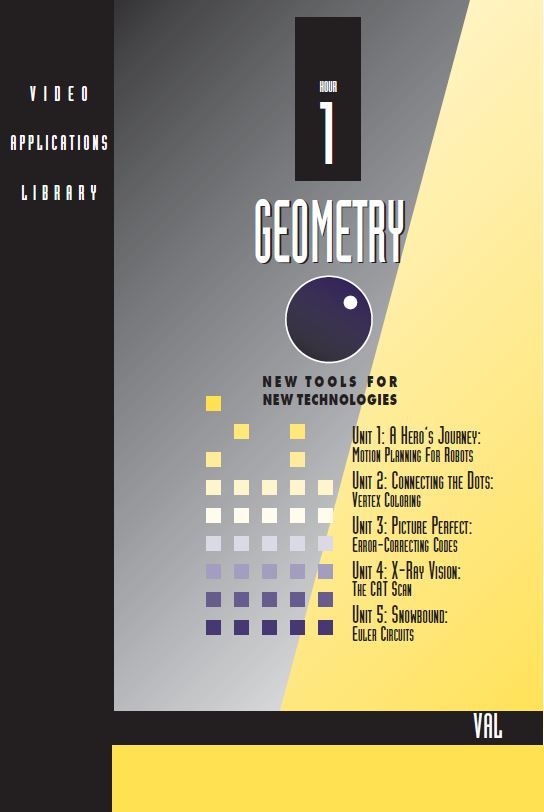Geometry: New Tools for New Technologies: Hour 1: Unit 4: X-Ray Vision the CAT Scan
Author: COMAP, Text by Joseph Malkevitch
How is geometry used to program a robot's movement? How do zoo planners use geometry to make habitats that are enjoyable and safe? Why do people who plan garbage pickups and snowplow routes need geometry? Geometry: New Tools for New Technologies I and II explores the exciting world of Geometry in the 20th century.
Unit 4: X-Ray Vision the CAT Scan (14:23)
Summary of the Video
X-ray Vision: The CAT Scan, hosted by mathematician Larry Shepp (AT&T Bell Laboratories), shows the way mathematics has been involved with developing soft tissue x-rays for medical diagnosis. Against the backdrop of a story of helping a boy who has been hurt in a bicycle accident, the development of CAT scanners is explored. Key individuals involved were Roentgen, the physicist who accidentally discovered x-rays, and the mathematician Johann Radon, who solved a problem about recovering information about geometric objects by computing line sums. Radon was not thinking about medical imaging, but solving a mathematical puzzle. Only after the development of high-speed digital computers could physics, mathematics, and engineering concepts be put together to create a practical soft-tissue x-ray machine. A simple analogy to Radon’s work demonstrates using simple geometry and algebra, the intuitive ideas used for image reconstruction.
Video support materials are available as part of COMAP full membership. Each video is accompanied by a user's guide with reproducible student exercises and quizzes.

Mathematics Topics:
Application Areas:
Prerequisites:
You must have a Full Membership to download this resource.
If you're already a member, login here.